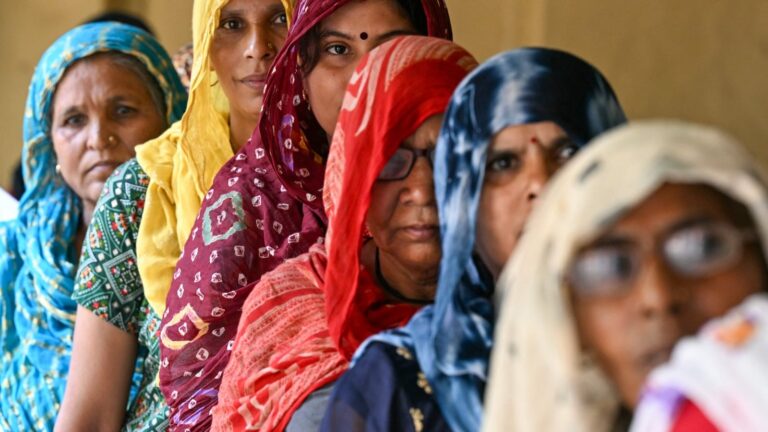After crisscrossing the country over the past eight weeks, here are 10 key lessons learned from the elections that reveal the strengths and weaknesses of India’s electoral democracy.

First, if there is one common thread across India in this election, it is the Modi factor. The Prime Minister looms large in a uniquely polarizing and stabilizing way. The BJP’s “Modi guarantees” slogan is meant to turn this election into a de facto presidential election, dwarfing the National Democratic Alliance’s (NDA) 543 candidates. The conversation on the streets boils down to whether Modi has done enough in the last decade to deserve the next five. If the 2014 term was driven by a desire for change and the 2019 term by an overarching sense of hardline nationalism, this election is dominated by a personality cult that predominates above all else.
Second, while the BJP tried to frame this election as a “one leader, one nation” narrative, the opposition tried to make it as local as possible, with some success. From students in Uttar Pradesh (UP) complaining about document leaks to onion farmers in Nashik protesting against export controls to small businesses in Coimbatore raising concerns over the Goods and Services Tax, this election showed the limits of striving for unity in a diverse country. The final vote may not be so fragmented, but at least the conversation on the streets reflects a healthy diversity of opinion.
Third, the politics of fear has replaced the politics of hope, a recurring theme. The prime minister began this plunge into darkness by likening the Congress Party’s manifesto to that of the Muslim League. Whether mangalsutra or mujra, its crude language is intended to stoke the majority community’s prejudices against Muslims, a familiar trope for a party whose core base is energized by Muslim-bashing. It is also fear that has led the Congress Party to warn that “the Constitution is in danger” and that the BJP may strip reservations. It remains to be seen how the caste-and-sectarian matrix will ultimately play out, but what is more reassuring is that divisive emotional appeals have less impact on the ground than in a television studio.
Fourth, the fight for guarantees reveals the increasingly transactional nature of electoral politics. Economists may warn against freebies, but for the vast majority of Indians living in poverty, free rations, extra ₹$500 in a bank account or a free bus ride are considered genuine benefits. Not surprisingly, Rahul Gandhi’s constant promises garner more instant applause than his Mohabbat ki Dukhan monologues. This election has witnessed unbridled competitive populism. Mai Baap Sarkar is still expected to be the ultimate provider.
5. Vikas, or development, is seen through the prism of class and geography. Shiny highways are picturesque for the urban middle class, but village roads remain impassable for motorists. The entrepreneurial energy is visible in urban sprawl, but not in rural India. While the super-rich eye the golden visa in Dubai, farmers in the eastern state of Uttar Pradesh seek a solution to their awara pash (stray cows). The contrast between the aspirational lifestyle of the rich and the basic insecurity of the poor in a grossly unequal society could not be starker. Inequality is not just rural-urban, but also north-south, east-west. Even the average school and primary health centre in a southern Indian state seems better equipped than those in the Hindi-speaking heartlands.
6. The disconnect between leaders and their people is only widening. Lalbatis have been replaced by motorcades of fuel-guzzling SUVs, a quick wave here, a quick photo there, but the average neta is a distant and inaccessible presence to an increasingly disillusioned electorate. The wealth of many of the interest-seekers seems to grow exponentially every five years while their constituents struggle to make a living.
7. Politics no longer seems to attract the best and the brightest. There is growing cynicism about Netagiri’s blatant exhibitionism and a dearth of populist leaders capable of making a difference on the ground. Not surprisingly, it is local leaders who stand out, far more confident in their rooted identities than those flaunting ministerial privilege in the capital.
Eighth, there is a new Muslim Yadav in town. Not Muslim Yadav but Mahila and Yuva. These are two key demographics that could be decisive in 2024. Women voters have more agency than ever before in making independent choices. Women voters are the core Rabarti (beneficiary) constituency for all political parties. Young voters are restless and unwilling to take election promises at face value. Not surprisingly, it is the young who are the loudest voices of opposition on the streets in this election.
9. Social media is now an active player in the political game. If 2019 was India’s first WhatsApp election, 2024 will see YouTube videos and Instagram Reels take center stage. Young people in every mohalla across the country are voraciously consuming content on their mobile phones, and their opinions are being shaped by short viral videos. In an age of misinformation and hyper-partisanship, social media is a major disruptor.
10. Even if constitutional democracy seems to have weakened, electoral democracy is not dead. This election turned out to be much more competitive than expected, and the opposition found a voice and even a discourse that forced the authoritarian regime to fight back. There may not be a level playing field in terms of access to institutional power and financial resources, but at least the electorate still has its own mind and an infinite capacity to surprise and confound. It may be the more silent electorate that has the last laugh on Judgment Day.
P.S.: I refrain from predicting the final election outcome and leave it to the exit pollsters to crunch the numbers. But here’s a hint: With the state-level races heating up, the national verdict is expected to be clear-cut.
Rajdeep Sardesai is a senior journalist and author. The views expressed here are personal.

